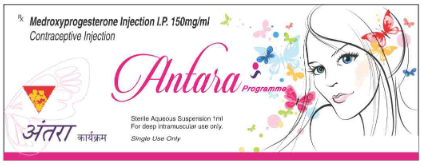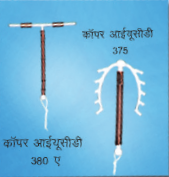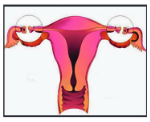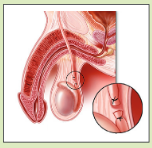Family Planning
Increasing investments in family planning can significantly reduce the effects of rapid population growth by enabling women to achieve their preferred family size and prevent unplanned or poorly timed pregnancies. Moreover, the use of contraceptives can eliminate the need for induced abortions, thereby preventing many associated fatalities.
Contraceptive Methods Awailable under the National Family Welfare Program
In India, the currently available contraceptive options are generally classified into two main types: spacing methods and permanent methods. Additionally, emergency contraceptive pills are available for use in urgent situations.
Spacing Contraception Methods
These are reversible contraceptive methods designed for couples planning to have children in the future. They include:
1. Injectable contraceptive MPA (ANTRA) :
MPA is the Injectable contraceptive introduced under the ‘Antara’ program.

2. Oral contraceptive pills (OCP) :
These are daily hormonal pills that women should take at a consistent time each day. The pack also includes iron supplements for use during the days when hormonal pills are not taken. This method is suitable for most women following an evaluation by a trained healthcare provider. The brand “MALA-N” is provided free of charge at all public health facilities.

Centchroman “Chhaya”, a non-steroidal oral pill taken once a week, also recently added to the current range of contraceptive options.

3. Condoms :
These barrier contraceptive methods provide dual protection by preventing unintended pregnancies and reducing the risk of RTIs/STIs, including HIV. The brand “Nirodh” is distributed free at government health facilities and made available by ASHAs.

4. Intra-Uterine Contraceptive Devices (IUCD) :
Copper-based IUCDs are a highly efficient option for long-term birth spacing. There are two types of IUCD’s awailable –
a. IUCD Cu 375 – It’s effective upto 5 years.
b. IUCD Cu 380A – It’s effective upto 10 years.

The user should schedule follow-up visits at 1, 3, and 6 months after IUCD insertion, as the risk of expulsion is highest during this period.
This method should be avoided by women with uterine abnormalities, those with active pelvic inflammatory disease (PID), or women at higher risk of STIs/RTIs, such as those with multiple sexual partners.
Permanent Contraception Methods
These methods can be chosen by either partner in the couple and are irreversible methods. They include :
1. Female Sterilisation :

There are two techniques awailable in India for female sterilisation –
a. Minilaparotomy (Minilap) – Minilaparotomy requires making a small abdominal incision, through which the fallopian tubes are brought to the surface to be either cut or blocked. It can be performed by a trained docter.
b. Laparoscopic Sterilisation (L.S.) – Laparoscopy is a procedure where a thin, flexible tube with a camera is inserted into the abdomen through a small incision. The laparoscope allows the doctor to view and either block or cut the fallopian tubes. This procedure must be performed by a trained and certified doctor or specialist.
2. Male Sterilisation :

A small incision or puncture is made in the scrotum to locate the two vas deferens tubes that carry sperm. These tubes are either cut and tied or sealed using heat or electricity (cautery). The procedure is carried out by trained doctors. After sterilization, the couple must use an alternative contraceptive method for the first three months until no sperm are detected in the semen.
Techniques used in India : are conventional and Non scalpel vasectomy (NSV).
Emergency Contraceptive Pill (Ezy Pill) :

This pill is meant for emergency situations following unprotected or unintended intercourse. It should be taken within 72 hours of the event and is not intended as a substitute for regular contraception.
